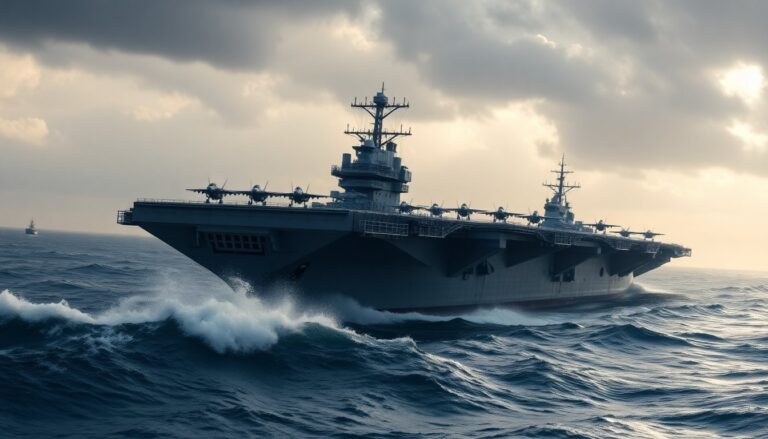Argomenti trattati
Throughout history, aircraft carriers have become vital assets in naval warfare, evolving from primitive vessels into complex floating airbases. These ships have dramatically reshaped military engagements, enabling nations to project power far beyond their shores. This article examines the intricate development of aircraft carriers and their critical role in modern military operations.
The historical backdrop of aircraft carriers
The concept of an aircraft carrier emerged in the early 20th century as naval strategists recognized the potential of aircraft in warfare. Initially, these carriers served as simple platforms for launching reconnaissance balloons. As technology advanced, dedicated carriers evolved, equipped with extensive facilities to support various aircraft types. The transition from wooden ships to nuclear-powered supercarriers illustrates the remarkable evolution of this essential military asset.
The technological advancement of carriers
Modern aircraft carriers feature advanced systems designed for the efficient launching and recovery of aircraft. These vessels can accommodate a wide variety of planes, including fighter jets, attack aircraft, and helicopters. The capability to conduct operations without dependence on land bases significantly enhances a navy’s operational flexibility. For example, the United States Navy operates several nuclear-powered carriers, demonstrating the capabilities and technological superiority of contemporary naval forces.
Strategic significance in contemporary warfare
Aircraft carriers play a crucial role in modern naval strategy. They allow nations to maintain a strong military presence across the globe. Operating in international waters enables these vessels to project power while respecting territorial boundaries, thereby minimizing diplomatic tensions. The deployment of an aircraft carrier often acts as a deterrent against potential threats, effectively demonstrating a country’s military capability and its dedication to safeguarding national interests.
Aircraft carriers in global military dynamics
There are approximately 50 active aircraft carriers across various navies, with the United States leading in both number and capabilities. The US Navy operates 11 large nuclear-powered carriers, each capable of deploying around 80 aircraft. Other nations, including China and India, have significantly invested in their carrier programs, aiming to enhance their naval capabilities and assert their influence on the global stage.
The significance of these vessels extends beyond military function; they are also considered tools of diplomatic power. Former U.S. Secretary of State Henry Kissinger famously stated that an aircraft carrier is “100,000 tons of diplomacy,” highlighting how these vessels can symbolize a nation’s resolve and ability to respond to global challenges.
The future of aircraft carriers
The design and operational concepts of aircraft carriers are evolving in response to changing military needs. Future carriers are being developed with enhanced capabilities, emphasizing stealth technology, automated systems, and support for new generations of unmanned aerial vehicles (UAVs). These advancements are critical to ensuring that aircraft carriers remain relevant and effective in the dynamic landscape of maritime warfare.
Countries such as China and France are actively constructing new carriers that integrate cutting-edge technologies. This trend indicates a shift toward larger and more capable vessels, underscoring the enduring significance of aircraft carriers in naval strategy and international relations.
The evolution of aircraft carriers
The evolution of aircraft carriers marks a significant shift in naval warfare. Once basic vessels, these ships have transformed into sophisticated platforms essential for modern military operations.
Aircraft carriers now serve as a blend of technological innovation and strategic necessity. Their design and capabilities reflect the changing landscape of global power and military engagement.
As military strategies evolve, aircraft carriers continue to play a crucial role in shaping how nations project power and respond to conflicts. Their ability to deploy aircraft over vast distances enhances operational flexibility and effectiveness.

